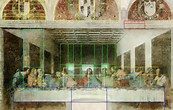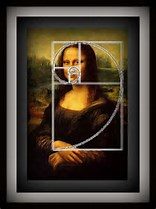The golden ratio is also known as Phi (Φ) and goes (a + b)/ b = b/a
Using Fibonacci’s number sequence to calculate the Golden Ratio works for all of the numbers after number 3 in the sequence. 1,1,2,3,5,8,13,21,34,55
Example:
- (2+3)/3=1.6666666
- (8+13)/13=1.612384
To anyone who did not have the opportunity of having this equation explained and demonstrated to them may be sitting there thinking that looks rather complicated. I like to think of it as where by you divide any number by the one before you will always get 1.6…. Much simpler – to me anyway.
What is the point in all this. Well the Ratio 1.6… is known as the optimum ratio of aesthetic beauty. We tried this out on measuring our own bodies – from our hands to our full bodies to work out the ratio and if we are “beautiful”. This was a fun activity, giving us a real life example of the Golden ratio and how it works. Imagine my horror when I found my hands were not the optimum beautiful hands I thought they were and disproportionate to the rest of my body – perhaps my measurements were wrong!!! That or I have massive shovel hands!
The Fibonacci sequence and ratio occurs so frequently in our world and is applied across many areas of human endeavour including architecture and other forms of art.
During the Renaissance period where Leonardo Da Vinci painted The Last Supper and the Mona Lisa, further observation of these show the use of the Golden Ratio making them aesthetically pleasing to the eye. Having never been aware of the existence of the Golden ratio and how it makes up some of most famous paintings in the world I now feel slightly more knowledgeable and sharp of where and when to look out for it. I especially feel if I was teaching an art lesson on for example self-portraits I feel more confident in my ability to explain the ratio’s (perhaps not to use them in practice) but to at least outline and explain the use and aesthetic advantages it holds.
References
Knott, R. (2010) Fibonacci Numbers and Nature. [Online]. Available at: http://www.maths.surrey.ac.uk/hosted-sites/R.Knott/Fibonacci/fibnat.html#petals (accessed 31/10/16)



